Click for high-resolution panorama. On Sunday -- after the usual 18 holes of golf -- I dined at Port Canaveral's Milliken's Reef, where an inattentive, dimwitted waiter served me a Diet Coke with scallops in a sweet rum sauce. I've had better. In Maine. The Coke was good, though. I went there with some friends and their children, who enjoyed catching the three big cruise ships sail into the Atlantic Ocean. But after the meal was when my kind of show started: a severe thunderstorm that was rolling south. The above panorama was made from 16 photos snapped later at the beach in the nearby city of Cape Canaveral.

We clearly finished eating at the right time. A downpour was imminent.
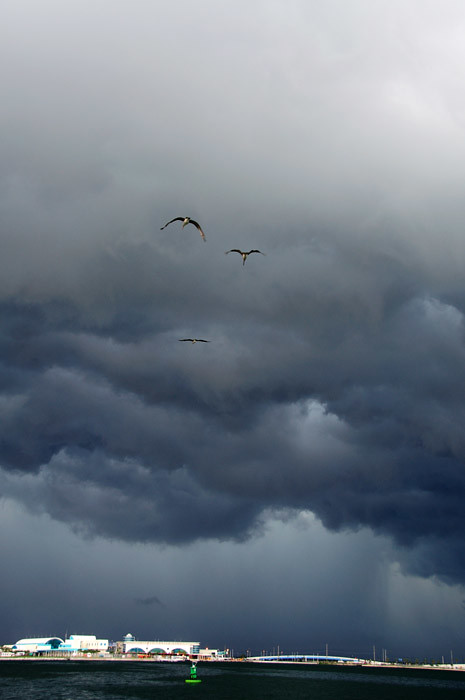
The wind picked up, and the birds scrambled.

I left Port Canaveral in search of land that offered a better vista of my natural surroundings. There simply were too many ships and restaurants blocking my view at Port Canaveral. So, I found the nearest public beach with free access.
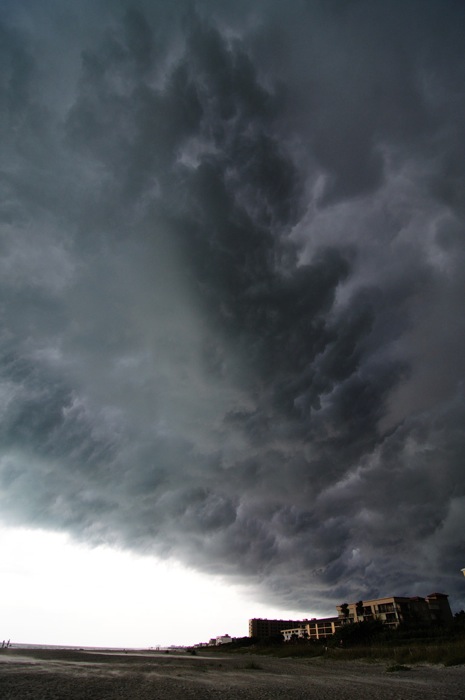
These shots of the storm's underside remind me of the Milky Way at night.
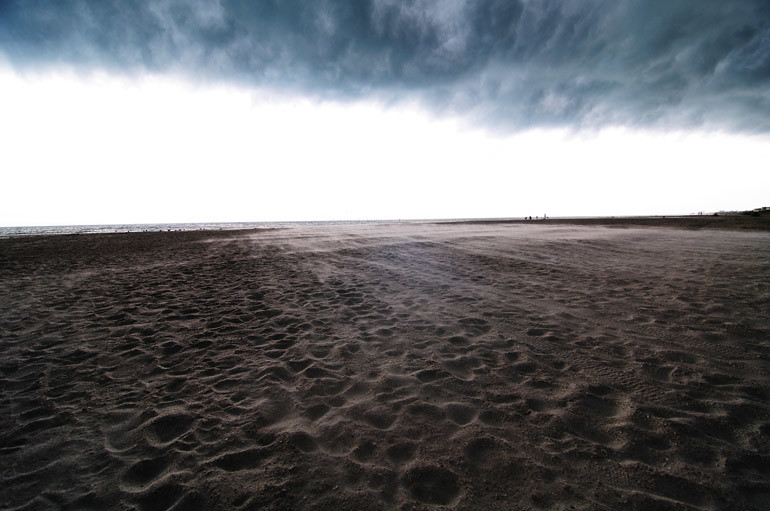
The wind blew sand across one of Brevard County's widest beaches.
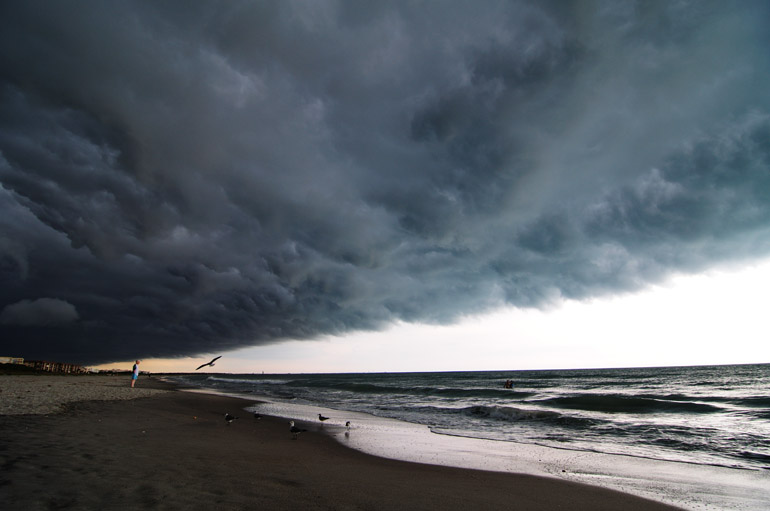
An old man watched the sea and the people bathing in it, as thunder rolled.

The beach's curvature signifies the southern reach of Cape Canaveral, the actual geographic feature, not the city. The towers are part of Cape Canaveral Air Force Station, where rockets blast off packed with military and commercial satellites.
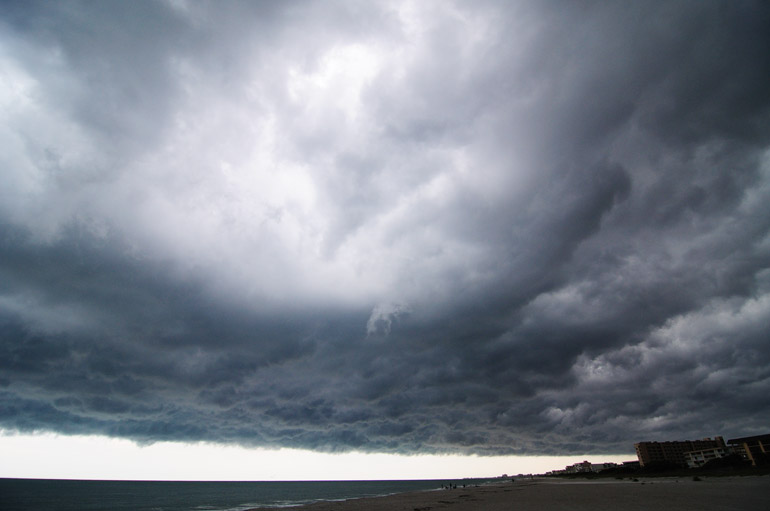
Light peeked through part of the storm. But it started to sprinkle.
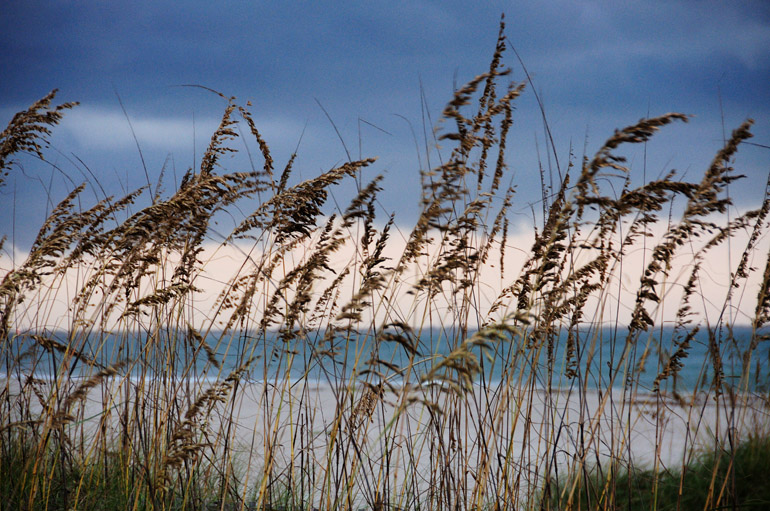
Sea oats swayed in front of a layer cake of color.
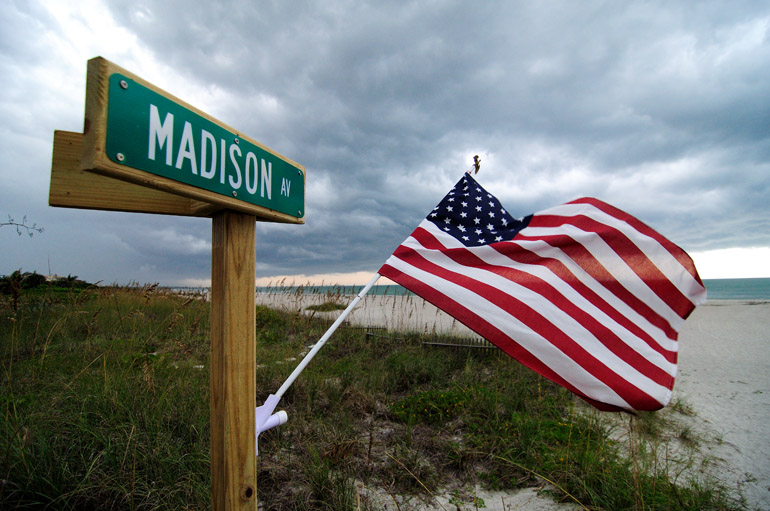
A good wide-angle shot was in keeping with the upcoming day of remembrance for 9/11.
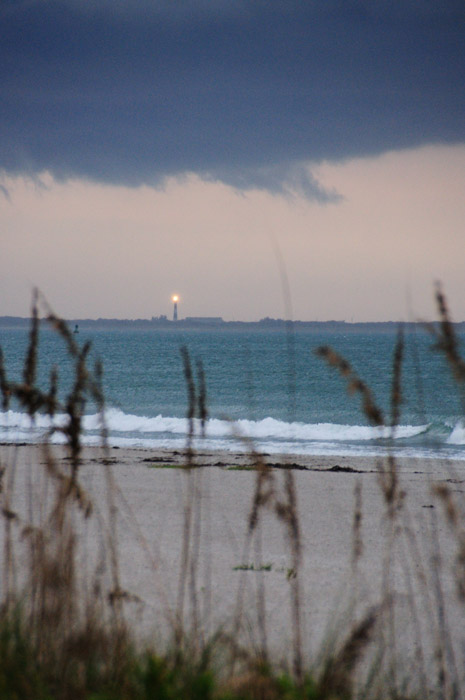
This was probably the first time I've noticed the beacon from the 60-foot Cape Canaveral Light. Because the Florida coast lacks rocks and fog, I sometimes have difficulty fathoming the need for lighthouses on it.
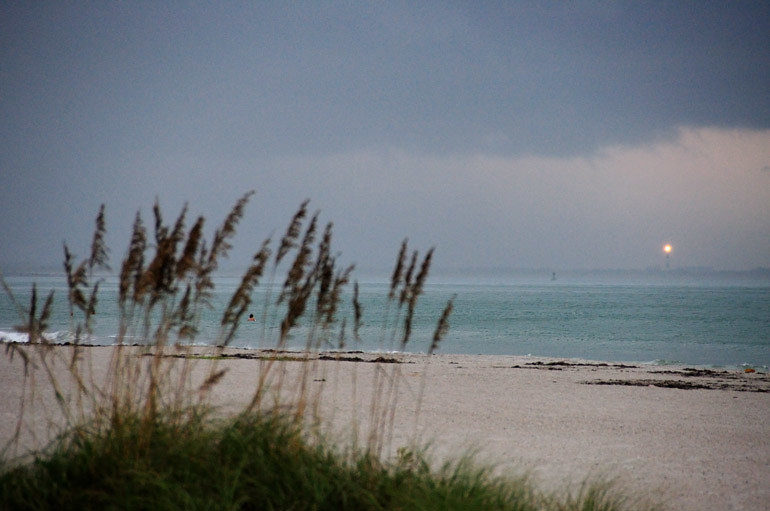
Rain was near. The storm tracked on a southerly, almost southwesterly course. It started to pour, so I drove south along the ocean.
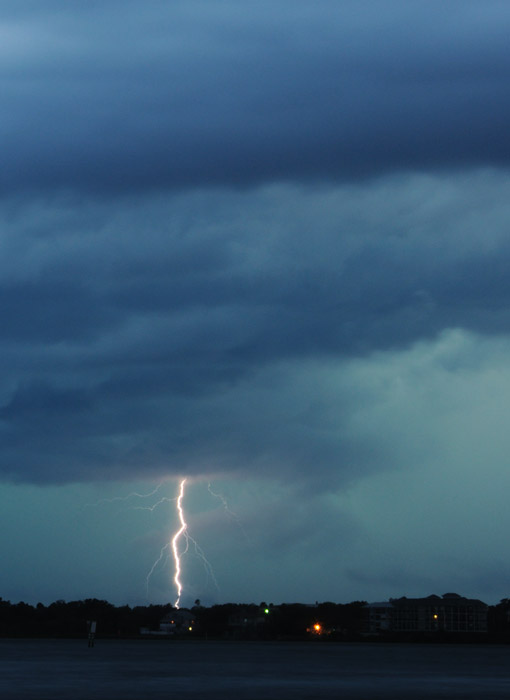
Before making it to the mainland, I stopped on the Melbourne Causeway and tried a few six-minute exposures of lightning. It was more than a half-hour before sunset, but the sky was fairly dark. I closed down the camera's aperture to allow such a lengthy shutter speed.
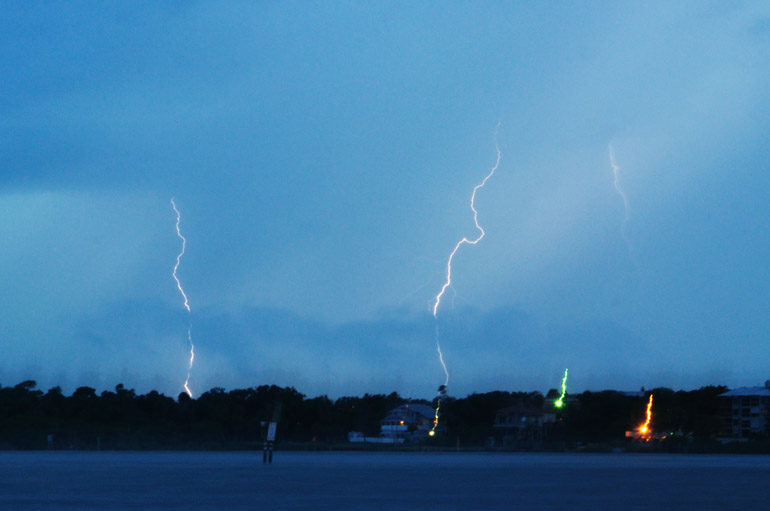
The worst of the lightning was distant, though a bolt did strike nearby as I carried my tripod across four lanes of traffic in the pouring rain. I figured the cars were more of a danger to me at the time. This shot's light streaks indicate that the camera moved during the exposure, likely because it was shaken by the wind. The National Weather Service recorded gusts in excess of 60 mph, and it was the first time I've had to hold onto a tree to stay upright during a storm.




No comments:
Post a Comment